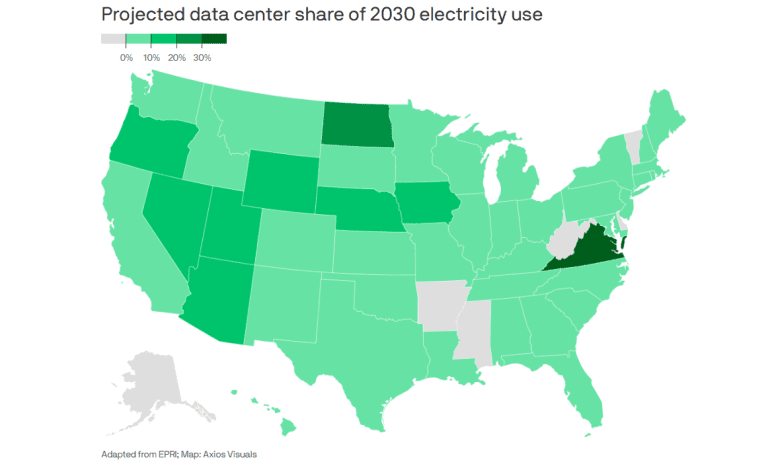- AI-driven data centers are poised to significantly increase U.S. power demand by 2030, with estimates ranging from 4.6% to 9.1% of total electricity consumption.
- The surge in energy consumption is driven by the exponential growth of AI algorithms, which are estimated to consume ten times more electricity per request compared to traditional queries.
- Natural gas is projected to play a dominant role in meeting the incremental energy demands of data centers in the near to medium-term.
- Collaboration between the data center industry and utilities is crucial, with initiatives such as clean fuel-powered backup generators aiming to reshape the data center-grid relationship.
- EPRI emphasizes the need for a multipronged strategy that includes efficiency gains and explores sustainable energy solutions to address the challenge of burgeoning energy demands.
Main AI News:
In the heart of the digital age, as artificial intelligence (AI) continues its inexorable ascent, a seismic shift is underway in the landscape of energy consumption. The recent projections unveiled by the Electric Power Research Institute (EPRI) shed light on the looming challenge: the burgeoning energy demands of data centers, amplified by the integration of AI technologies. As the thirst for power intensifies, so too does the imperative for a nuanced approach to energy sourcing, with profound implications for carbon emissions and sustainability efforts.
The Scope of the Challenge
EPRI’s latest report paints a striking picture of the trajectory ahead. By 2030, data centers, driven by the burgeoning demands of AI, are forecasted to consume between 4.6% and 9.1% of U.S. electricity, a substantial increase from the 4% figure recorded just last year. This surge is not uniform, with regional disparities shaping the landscape of consumption. Currently, data centers in 15 states shoulder 80% of the total load, reflecting the localized nature of this burgeoning industry.
The Power Hungry Nature of AI
At the heart of this surge lies the voracious appetite of AI algorithms, which, according to EPRI, are estimated to consume 2.9 watt-hours per ChatGPT request, a staggering tenfold increase compared to traditional Google queries. The emergence of AI-driven applications in video, image, and audio processing further amplifies this demand, presenting unprecedented challenges for energy planners and policymakers alike.
Navigating Energy Sourcing
The choice of energy sources to meet this burgeoning demand will exert a profound influence on future carbon emissions and sustainability outcomes. While tech giants like Google and Microsoft are making strides in zero-carbon energy procurement, a recent TD Cowen report suggests that natural gas will play a dominant role in supporting incremental data center load growth in the near to medium-term.
Strategic Imperatives
Amidst this dynamic landscape, EPRI advocates for a multipronged strategy that embraces efficiency gains while exploring innovative solutions for sustainable energy provisioning. Collaboration between the data center industry and utilities is paramount, with initiatives such as backup generators powered by “clean fuels” offering promise in reshaping the data center-grid relationship. By transitioning towards a “shared energy economy,” wherein data center resources contribute to grid reliability and flexibility, a new paradigm of sustainability and resilience can be forged.
Looking Ahead
As the AI data center boom reshapes the energy landscape, proactive collaboration and innovative solutions are imperative. EPRI’s ongoing partnership with industry stakeholders underscores the urgency of addressing this challenge. By embracing efficiency gains, exploring sustainable energy solutions, and fostering collaboration across sectors, the path forward can be paved towards a more sustainable and resilient energy future.
Conclusion:
The rapid expansion of AI-driven data centers presents both challenges and opportunities for the energy market. While natural gas may serve as a primary source in the short term, there is a pressing need for innovation and collaboration to transition towards a more sustainable and resilient energy future. This shift will require proactive engagement from stakeholders across sectors to navigate the complexities of energy provisioning in the digital age.

